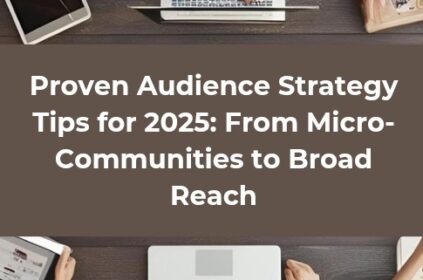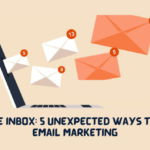You are welcome to “A Guide to the Best Advertising Platforms for Your Business”. In today’s competitive business landscape, standing out from the crowd is very important for achieving sustainable growth.
Digital Advertising plays a vital role in this endeavor, allowing you to reach your target audience, build brand awareness, and ultimately drive sales. However, with a vast array of advertising platforms available, navigating this digital landscape can be overwhelming. This guide aims to simplify the process by equipping you with the knowledge to choose the right platform for your business needs.
Here, we’ll explore the top advertising platforms, categorized by their functionalities. We’ll delve into Search Engine Advertising (SEA), where you can target users actively searching for products or services like yours.
We’ll then explore the world of Social Media Advertising, where you can leverage powerful social networks to connect with your target audience and build brand loyalty.
Display Advertising will be on the menu as well, offering various options for brand awareness campaigns and retargeting website visitors. Finally, we’ll touch upon other relevant platforms depending on your specific goals, such as Native Advertising and Email Marketing.
By the end of this guide, you’ll be armed with the key factors to consider when selecting an advertising platform. We’ll discuss aspects like your target audience, campaign goals, budget constraints, and the level of campaign management expertise required.
Remember, the best platform for your business isn’t a one-size-fits-all solution. This guide will empower you to make informed decisions and leverage the advertising landscape to propel your business forward.
Top Advertising Platforms You Should Consider for Your Business
Let’s break down the functionalities and strengths of each major advertising platform category, making it easy for you to navigate the world of online advertising:
Search Engine Advertising (SEA):

Imagine a situation where potential customers are actively searching online for exactly what you offer. That’s the power of Search Engine Advertising (SEA). With SEA, you place your ads on search engine results pages (SERPs), putting your brand right in front of users with high purchase intent.
This means they’re already looking for products or services like yours, making them much more likely to click on your ad, visit your website, and potentially convert into a customer.
Here are the two major SEA platforms you’ll encounter:
#1. Google Ads:
Consider Google Ads the king of SEA. It boasts an enormous reach, allowing you to target users across various websites and platforms within the Google Search Network. This network includes the familiar Google Search engine itself, along with search results on partner websites and even YouTube searches.

With Google Ads, you can create highly targeted campaigns based on specific criteria like:
1. Demographics: Age, gender, location, income level, etc.
2. Interests: What users are passionate about (e.g., sports, cooking, travel)
3. Keywords: Specific words or phrases users search for (e.g., “best running shoes,” “buy organic vegetables”)
4. Online Behavior: Websites users visit, past purchases, and browsing habits
This targeting precision allows you to reach highly specific user segments most likely to be interested in what you offer. Google Ads also provides various campaign formats to suit your goals:
#1. Search Network Campaigns: As mentioned previously, these target users based on the keywords they search for. You can further refine your targeting by location, device type (mobile, desktop), and even time of day. Here are some sub-types within Search Network Campaigns:
#2. Keyword Match Types: These determine how closely your ad matches a user’s search query. For example, with “broad match,” your ad might show for a wider range of related searches, while “exact match” ensures your ad appears only for specific keyword phrases.
#3. Call-Only Ads: These click-to-call options allow users to initiate a phone call directly from the search results page, ideal for businesses with a strong focus on phone inquiries.
#4. Display Network Campaigns: These expand your reach beyond search results, placing your ads on a massive network of websites and apps. Google Ads uses automated systems to match your ads to relevant websites based on your targeting criteria. You can choose various ad formats for display campaigns, including:
#5. Banner Ads: These are rectangular image or text ads in various sizes that appear on websites and apps.
#6. Responsive Display Ads: A flexible format that allows you to upload various headlines, descriptions, and images. Google Ads automatically generates different ad combinations to optimize performance across different placements.
#7. Gmail Ads: These appear within users’ Gmail inboxes, allowing you to target users based on their email content and interests.
#8. Shopping Ads: This product-centric format showcases your product listings directly on Google Shopping and partner platforms. When users search for products related to your offerings, your ad displays product images, titles, prices, and your store name. This format is ideal for e-commerce businesses looking to drive product sales.
#9. App Campaigns: Specifically designed to promote mobile apps, App Campaigns help you acquire new app users and encourage existing users to take specific actions within your app. You can target users based on demographics, interests, and even their likelihood to make in-app purchases.
#10. Video Ads: While not strictly a format within Google Ads itself, video ads can be integrated into your campaigns and displayed across various platforms like YouTube. These engaging video ads can effectively capture user attention and promote your brand or products.
#11. Local Campaigns: If you have a brick-and-mortar location, local campaigns can help you promote your business to local customers searching for products or services in your area. Your ads can appear on Google Search, Maps, and other Google properties, with a focus on driving traffic to your physical location or website.
Remember, the best campaign format for your business depends on your specific goals. Consider a combination of formats based on whether you want to drive website traffic, generate leads, promote app downloads, or increase brand awareness. By testing different formats and analyzing results, you can optimize your campaigns for maximum impact.
#2. Microsoft Advertising (Bing Ads)
While Google Ads reigns supreme in the SEA landscape, Microsoft Advertising, often referred to as Bing Ads, offers a compelling alternative, especially for businesses looking to stretch their advertising budget. Here’s a breakdown of Bing Ads and its potential benefits for beginners:
#1. Similar Functionality: Bing Ads operates similarly to Google Ads. You can create targeted campaigns, choose from various ad formats, and track your results. You’ll target users based on keywords, demographics, interests, and online behavior, ensuring your ads reach a relevant audience.
#2. Reaching a Different Audience: While Google boasts a larger user base, Bing Ads taps into a unique audience. This can be particularly valuable if your target demographic skews slightly older or uses Microsoft products like Bing or Yahoo for their searches.
#3. Potentially Lower Costs: Competition on Bing Ads might be lower compared to Google Ads. This translates to potentially lower costs per click (CPC) for your campaigns. For businesses on a tight budget, Bing Ads can be a cost-effective way to reach a relevant audience without breaking the bank.
#4. Simpler Interface: Some beginners find the Bing Ads interface to be slightly less complex compared to Google Ads. This can be a plus for those who are new to online advertising and want a platform that’s easier to navigate.
Getting Started with Bing Ads:
Here’s a simplified roadmap to get you started with Bing Ads:
1. Create an Account: Head over to https://ads.microsoft.com/ and sign up for a free Bing Ads account.
2. Set Your Campaign Goals: Determine what you want to achieve with your campaigns. Do you want to drive website traffic, generate leads, or increase brand awareness?
3. Define Your Target Audience: Who are you trying to reach? Consider demographics, interests, and the keywords they might use to search for products or services like yours.
4. Create Your Ads: Bing Ads offers various ad formats, similar to Google Ads. You can create text ads, image ads, or even product listing ads for e-commerce businesses.
5. Set Your Budget: Decide how much you’re comfortable spending on your campaigns. Bing Ads offers flexible budgeting options based on your daily or total campaign spend.
6. Launch and Monitor: Once everything is set up, launch your campaigns and monitor their performance. Bing Ads provides detailed reporting tools so you can track clicks, impressions, conversions, and adjust your campaigns as needed.
Bing Ads might not be the sole answer for your SEA strategy. However, it can be a valuable addition, especially for budget-conscious businesses or those targeting a specific audience segment that might be more active on Bing or Microsoft products. The best approach might involve testing both Google Ads and Bing Ads to see which platform delivers the best results for your specific needs and target audience.
Choosing the Right SEA Platform:
For most businesses, Google Ads will likely be the go-to choice due to its unparalleled reach and sophisticated targeting options. However, if you’re on a tight budget and want to explore additional avenues, consider incorporating Microsoft Advertising into your SEA strategy.
The best approach might even involve utilizing both advertising platforms to maximize your reach and potentially find a more cost-effective audience on Bing Ads while leveraging Google Ads’ vast user base. Remember, the key is to experiment and see which platform delivers the best results for your specific business goals.
Social Media Advertising Platforms
Social media advertising allows you to leverage the power of popular social media networks to connect with your target audience in a more personal and interactive way. These platforms provide highly targeted advertising options, allowing you to reach users based on a wide range of factors, including demographics, interests, online behavior, and even their social connections.

Here’s a breakdown of some major social media platforms with advertising capabilities:
#1. Facebook Ads:
Undoubtedly the social media advertising giant, Facebook Ads boasts an unparalleled user base, offering exceptional targeting capabilities. You can target users by age, location, interests, and even life events (e.g., recently married, expecting a baby).
Facebook Ads offers a variety of ad formats, including images, videos, carousels showcasing multiple products, and even playable ads for mobile app promotions. This platform excels at driving website traffic, generating leads, and promoting brand awareness.
#2. Instagram Ads:
A visually-driven platform, Instagram Ads are ideal for businesses that can leverage high-quality images and videos to showcase their products or services. Instagram integrates seamlessly with Facebook Ads, allowing you to manage campaigns from a single platform.
Influencer marketing can be particularly effective on Instagram, where you can partner with relevant creators to reach a wider audience and build brand trust.
#3. LinkedIn Ads:
LinkedIn Ads cater specifically to the world of professionals, offering a unique platform to target businesses and decision-makers within your niche. Here’s a quick breakdown:
1. Target by Industry and Job Title: With LinkedIn Ads, you can laser-focus your targeting by industry, company size, job title, and even specific skills. This ensures your ads reach highly relevant professionals most likely to be interested in your offerings.
2. Lead Generation Powerhouse: LinkedIn excels at lead generation. You can capture leads directly through lead capture forms within your ad or direct users to dedicated landing pages for further information gathering.
3. Content Marketing Promotion: Showcase your thought leadership content or industry expertise through sponsored content ads, establishing your brand as a trusted resource within your field.
4. Brand Awareness for B2B: Build brand awareness among relevant businesses and decision-makers. Consider LinkedIn Ads if your target audience consists of professionals in specific industries.
Consider LinkedIn Ads if:
1. You target B2B businesses or professionals.
2. Lead generation is a primary goal.
3. You want to establish your brand as a thought leader within your industry.
#4. Twitter Ads:
Known for its fast-paced nature and real-time conversations, Twitter Ads allow you to tap into trending topics and engage with users in a timely manner. Hashtags play a crucial role on Twitter, allowing you to target users interested in specific topics or events. Twitter Ads are well-suited for promoting thought leadership content, driving website traffic, and sparking conversations around your brand.
#5. TikTok Ads: Engaging Gen Z with Short-Form Video
TikTok, a platform known for its short, viral video content, is fast becoming a powerful advertising tool. TikTok Ads allow you to capture the attention of a younger generation (Gen Z and younger millennials) through engaging video ads. Here’s the key takeaway:
1. Short-Form Video Focus: Create high-quality, eye-catching videos under 60 seconds to grab attention in this fast-paced platform.
2. Organic Reach Potential: Compared to other platforms, TikTok offers a higher chance of organic reach for your ads, even with a smaller budget.
3. Influencer Marketing Powerhouse: Partner with relevant TikTok creators to leverage their established audience and create authentic, engaging content.
4. Targeted Reach: Despite the organic focus, you can still target users based on demographics, interests, and even in-app behavior.
Consider TikTok Ads if:
1. Your target audience is Gen Z or younger millennials.
2. You excel at creating engaging short-form video content.
3. You want to explore a platform with high organic reach potential.
#6. Snapchat Ads:
While not as ubiquitous as Facebook or Instagram, Snapchat Ads offer a unique way to connect with a specific demographic: Generation Z. Here’s a breakdown of what makes Snapchat Ads stand out:
1. Disappearing Act: The core of Snapchat is its ephemeral content that vanishes after a set time. Snap Ads leverage this format with engaging filters, lenses, and short video ads that disappear after a set timeframe. This creates a sense of urgency and exclusivity, potentially grabbing attention more effectively.
2. Interactive Storytelling: Snapchat Ads go beyond static images. You can utilize interactive elements like swipe-up options or quizzes to encourage user engagement and brand interaction.
3. Highly Targeted Reach: Despite its niche audience, Snapchat Ads offer sophisticated targeting options. You can target users based on demographics, interests, and even their behavior within the app, ensuring your disappearing ads reach the right eyes.
Is Snapchat Advertising Right for You?
Consider these factors before diving into Snapchat Ads:
1. Target Audience: Gen Z is Snapchat’s core demographic. If your ideal customer falls within this age group, Snapchat Ads can be a powerful tool.
2. Content Strategy: Creating engaging, fast-paced video content with disappearing elements is crucial. Consider partnering with Snapchat creators who understand the platform’s nuances.
3. Campaign Goals: While brand awareness can be achieved, Snapchat Ads might not be ideal for driving long-term website traffic due to the disappearing nature of the content.
Snapchat Ads offer a unique way to capture the attention of a younger audience through fleeting yet interactive content. By understanding the platform’s focus on disappearing content and its core Gen Z user base, you can determine if Snapchat aligns with your target audience and marketing goals.
#7. Pinterest Ads:

Unlike some social media platforms focused on following friends, Pinterest thrives on discovery. Users actively search for inspiration and ideas, making it a prime location for visually driven advertising. Pinterest Ads allow you to showcase your products or services through visually compelling “pins” that appear in users’ feeds based on their interests and search queries.
#1. Visually Driven Platform: High-quality images and engaging product presentations are crucial for success on Pinterest. If your brand excels at creating visually appealing content, Pinterest Ads can be highly effective.
#2. Targeting Based on Interests: Pinterest’s targeting goes beyond demographics. You can target users based on their specific interests and search habits, ensuring your ads reach users actively looking for products or services like yours.
#3. Driving Product Discovery: Since users are already in a discovery mindset, Pinterest Ads can be a powerful tool for driving product awareness and website traffic, particularly for e-commerce businesses.
You can Consider Pinterest Ads if:
1. You have high-quality visuals to showcase your products or services.
2. You want to target users actively searching for inspiration and ideas related to your offerings.
3. You aim to drive website traffic and product discovery for your brand.
Choosing the Right Social Media Platform:
The best social media platform for your advertising depends on your target audience and campaign goals. Here are some key considerations:
#1. Target Audience Demographics: Who are you trying to reach? Age, location, and interests will influence your platform choice.
#2. Campaign Goals: Do you want to generate leads, drive website traffic, or increase brand awareness? Different platforms cater to different goals.
#3. Content Strategy: What kind of content do you excel at creating? Align your content strengths with the platform’s format (e.g., visuals for Instagram, thought leadership content for LinkedIn).
#4. Content Format: Each platform prioritizes different content formats. Consider the type of content you excel at creating:
- Images/Videos: If visuals are your strength, Instagram, Pinterest, and even Facebook Ads with high-quality images or video will be strong options.
- Short-Form Video: For a younger audience, consider TikTok Ads where engaging short-form video content thrives.
- Text-Based Content: Platforms like LinkedIn and Twitter excel with text-based updates and thought leadership content.
#5. Budget: Advertising costs can vary across platforms. Consider the platform’s cost-per-click (CPC) rates and how they align with your budget. Platforms like Facebook Ads and LinkedIn Ads might have higher CPCs but offer more precise targeting, while newer platforms like TikTok Ads might offer lower costs but require more experimentation.
#6. Level of Engagement: Some platforms foster more active user engagement than others. If two-way conversations are crucial for your brand, prioritize platforms like Twitter or Facebook where comments and replies are commonplace.
#7. Campaign Objectives: Align your platform choice with your specific goals. Here’s a breakdown:
- Brand Awareness: Platforms with a broad user base like Facebook and Instagram can be ideal for building brand awareness.
- Lead Generation: LinkedIn Ads excel at targeting professionals and generating qualified leads for B2B businesses.
- Website Traffic: Compelling visuals and targeted ad formats on Facebook Ads and Instagram Ads can drive significant website traffic.
#8. Customer Acquisition: Consider platforms where users are actively looking for products or services, such as Pinterest where discovery is a core function.
#9. Competitor Analysis: See where your competitors are advertising and analyze their success. This can give you valuable insights into which platforms might be most effective for your industry.
Remember, the best approach often involves utilizing a combination of social media platforms. By understanding your target audience, campaign goals, and the strengths of each platform, you can create a multi-platform social media advertising strategy that maximizes your reach and engagement.
Display Advertising: Building Brand Awareness and Retargeting Website Visitors
Display advertising encompasses a broad range of visual ad formats placed across websites and apps beyond search engine results pages (SERPs). This category offers various options to achieve branding and marketing goals:
#1. Brand Awareness: Display advertising allows you to showcase your brand logo, messaging, and visuals across a vast network of websites. Repeated exposure can increase brand recognition and familiarity with your offerings.
#2. Retargeting: Have website visitors who haven’t converted yet? Retargeting allows you to display targeted ads to these users as they browse other websites. This “reminder marketing” can nudge them back to your website and potentially convert them into customers.

Here are two popular display advertising networks to consider:
#1. Google Display Network (GDN): This massive network reaches users across millions of websites and apps. With Google Ads, you can leverage various targeting options to ensure your display ads reach the right audience.
You can target users based on demographics, interests, browsing behavior, and even their interactions with your website or mobile app. GDN offers various ad formats, including banner ads, responsive display ads, and video ads.
#2. Programmatic Advertising: This involves automated ad buying on ad exchanges. Instead of manually negotiating ad placements with individual websites, programmatic advertising uses real-time bidding to purchase ad inventory across a vast network. This can be a cost-effective way to reach a broad audience while maintaining precise targeting based on your criteria.
Choosing the Right Display Advertising Approach:
The best approach for your business depends on your specific goals and budget. Here’s a quick breakdown:
#1. For Brand Awareness: GDN’s vast network reach can be ideal for building brand recognition. Leverage high-quality visuals and a clear brand message.
#2. For Retargeting: Focus on retargeting website visitors who haven’t converted yet. Tailor your message to remind them of the value you offer.
Display advertising is most effective as part of a larger digital marketing strategy. Combine it with other channels like search engine advertising or social media marketing to create a cohesive and impactful advertising presence.
Beyond the Basics: Exploring Additional Advertising Platforms
The world of online advertising extends beyond the core platforms discussed so far. Here are some additional options to consider depending on your specific goals and target audience:
#1. Amazon Ads: leverage the power of the massive Amazon marketplace, allowing you to target users actively searching for products similar to yours. Here’s a simplified overview:
1. Product Targeting: Target your ads based on specific product categories, keywords, or even competitor products. This ensures your ads appear alongside searches most relevant to your offerings.
2. Sponsored Product Ads: Showcase your product listings directly on Amazon search results pages (SERPs) and product detail pages, putting your offerings in front of high-intent shoppers already browsing for similar products.
3. Brand Awareness on Amazon: Build brand awareness within the Amazon ecosystem through display ads strategically placed across various product categories and pages.
4. Driving Product Sales: Ultimately, Amazon Ads are geared towards driving product sales and conversions within the Amazon marketplace.
#2. Native Advertising: This subtle form of advertising blends seamlessly with the content of a website or app. Native ads often take the form of sponsored articles, videos, or social media posts that provide value to the audience while subtly promoting a brand or product.
Native advertising can be highly effective for capturing user attention without feeling overly promotional.
#3. Email Marketing: While not strictly considered online advertising in the traditional sense, email marketing remains a powerful tool for nurturing leads and promoting products or services directly to a subscribed audience. Building an email list allows you to send targeted campaigns with personalized offers and content, fostering customer loyalty and driving conversions.
#4. Affiliate Marketing: This performance-based marketing strategy involves partnering with other websites or influencers to promote your products or services. Affiliates earn a commission for each sale generated through their unique referral link. Affiliate marketing can be a cost-effective way to tap into a wider audience and leverage the credibility of established partners.
Choosing the Right Additional Platform:
The decision to explore these additional platforms depends on your specific goals and target audience. Here’s a brief guide:
#1. Native Advertising: Ideal if you want to promote your brand in a subtle yet informative way, potentially reaching users who might be resistant to traditional ads.
#2. Email Marketing: Excellent for nurturing existing leads, promoting new products or services, and building long-term customer relationships.
#3. Affiliate Marketing: A cost-effective way to expand your reach and leverage the credibility of established partners. This strategy works best if you have a product or service that appeals to a well-defined niche with active affiliate marketers.
With a vast array of online advertising platforms at your disposal, choosing the right ones can feel overwhelming. Here’s a roadmap to guide your decision-making process and ensure you select platforms that deliver the biggest bang for your advertising buck:
Remember, the key to success lies in understanding your target audience, your marketing goals, and the strengths of each platform. By creating a well-rounded online advertising strategy that utilizes a combination of these options, you can maximize your reach, engagement, and ultimately, your return on investment (ROI).
General Tips for Selecting the Right Digital Advertising Platform

#1. Define Your Target Audience: This is the foundation of your strategy. Who are you trying to reach? Understanding your ideal customer’s demographics, interests, online behavior, and preferred platforms is crucial. Research their habits: Do they spend more time on social media, searching online for products, or consuming video content?
#2. Align Advertising Platforms with Campaign Goals: What do you want to achieve with your advertising campaign? Here’s a breakdown of some common goals and the platforms best suited to achieve them:
#3. Brand Awareness: Advertising Platforms with a broad reach like Facebook, Instagram, or even display advertising networks can be ideal for building brand recognition.
#4. Lead Generation: LinkedIn Ads excel at targeting professionals and generating qualified leads, while lead capture forms on informative native advertising placements can also be effective.
#5. Website Traffic: Compelling visuals and targeted ad formats on Facebook Ads, Instagram Ads, or Pinterest Ads can drive significant website traffic. Consider retargeting website visitors who haven’t converted yet to nudge them back.
#6. Customer Acquisition: Advertising Platforms where users are actively looking for products or services can be highly effective. Explore Google Search Ads for users with high purchase intent, or leverage Pinterest Ads to target users in discovery mode searching for inspiration related to your offerings.
#7. Consider Budget and Cost-Effectiveness: Advertising costs can vary significantly across platforms. Research the average cost-per-click (CPC) for your target audience on different platforms. While platforms like Facebook Ads or LinkedIn Ads might have higher CPCs, they offer precise targeting, potentially reaching a highly relevant audience. Newer advertising platforms like TikTok Ads might offer lower costs but require more experimentation to achieve optimal results.
#8. Content Strategy and Platform Alignment: Match your content strengths with the advertising platform’s preferred format. Can you create high-quality images and videos? Platforms like Instagram, TikTok, or Pinterest thrive on visuals. Do you excel at crafting informative articles? Consider native advertising placements or exploring content marketing partnerships.
#9. Analyze Competitor Strategies: See where your competitors are advertising and analyze their success. This can give you valuable insights into which advertising platforms might be most effective for your industry or niche.
By following these steps and carefully considering your target audience, campaign goals, budget, and content capabilities, you can make informed decisions about which advertising platforms will yield the highest return on investment (ROI) and propel your brand towards success.
Remember, the best approach often involves utilizing a multi-platform strategy, allowing you to reach your target audience across various touchpoints within the vast digital landscape.
Conclusion
By now, you’ve explored a diverse landscape of online advertising platforms, each with its unique strengths and functionalities. Remember, there’s no one-size-fits-all solution. The best advertising platform (or combination of platforms) for your business depends on several crucial factors as discussed in this guide.
In conclusion, here are some final takeaways to steer your online advertising journey:
1. Start Small and Experiment: Don’t try to conquer every advertising platform at once. Begin with a platform or two that aligns best with your goals and budget. Test different ad formats, targeting options, and content approaches to see what resonates with your audience.
2. Track and Analyze Performance: Monitor your advertising campaigns closely. Most advertising platforms provide detailed analytics that show you how your ads are performing. Use this data to identify what’s working and what needs improvement. Continuously optimize your campaigns based on your findings.
3. Embrace a Multi-Platform Approach: For optimal reach and impact, consider utilizing a combination of advertising platforms. Social media advertising can build brand awareness, while search engine advertising can capture users actively searching for products or services like yours.
4. Stay Informed: The digital advertising landscape is constantly evolving. Stay updated on the latest trends, platform updates, and targeting options to ensure your strategy remains effective.
By following these guidelines and leveraging the knowledge you’ve gained about various advertising platforms, you can craft a winning advertising strategy that propels your business forward and achieves your marketing goals. Successful online advertising is an ongoing process of experimentation, optimization, and adaptation. So, dive in, explore the possibilities, and watch your brand flourish in the ever-growing digital landscape.










